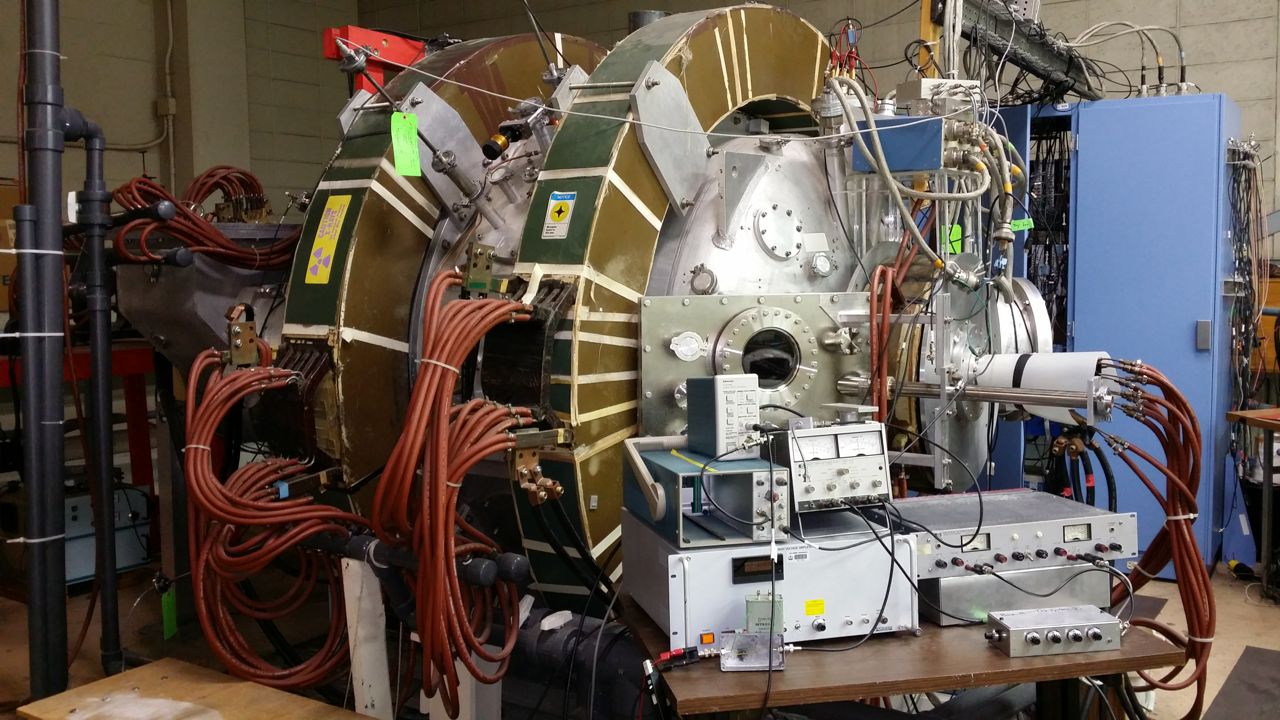
The objectives of this research in magnetospheric physics are to demonstrate and understand the basic principles of collisionless transport of energetic plasma in planetary magnetospheres and to identify mechanisms causing charged particle energization and flux modulations.
This research combines detailed laboratory measurements using a specially-constructed laboratory terrella with theoretical investigation and numerical simulation of energetic plasma trapped in a dipole magnetic field. By establishing correlations between the controlled laboratory experiment and numerical simulations, the underlying role of low-frequency fluctuations as the cause of transport and heating of energetic particles in dipole fields will be elucidated. Physics-based models for similar processes occurring in the radiation belt and planetary magnetospheres will be tested and evaluated using controlled laboratory experimentation.
Our proposed research will perform the following specific tasks:
- Dynamic, two-dimensional image-maps of energetic particle density will be measured during rapid transport induced by intense low-frequency fluctuations. A complete and global picture of large-scale modulations of energetic particle density will be obtained.
- The measured transport rate will be compared with theoretical expectations and numerical simulations. Comparison between experiment and computational models will further develop our ability to predict and understand energetic particle transport in planetary magnetospheres.
- The induced transport of energetic particles across magnetic boundary layers will be investigated experimentally and theoretically.
- Whistler wave resonances will be excited and studied theoretically. Receiving and transmitting antenna will be inserted near the poles of the dipole allowing controlled excitation of trapped whistler-wave eigenmodes. As the whistler-wave intensity is increased, polar precipitation will be induced and two-dimensional collisionless chaos will be observable.
- Plasma flows will be induced by a series of tungstun meshes located on the dipole magnet at the equitorial midplane, and by a 'Bias Probe', creating electric fields to drive E X B flows and convective cells.
- And, detailed comparisons will be made between laboratory measurement, analytical theory and numerical simulation, and observations from satellites.